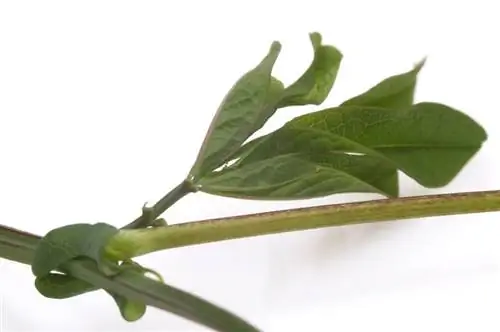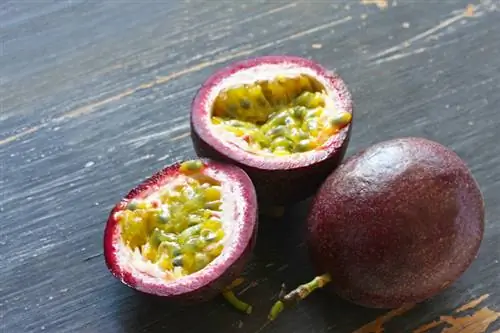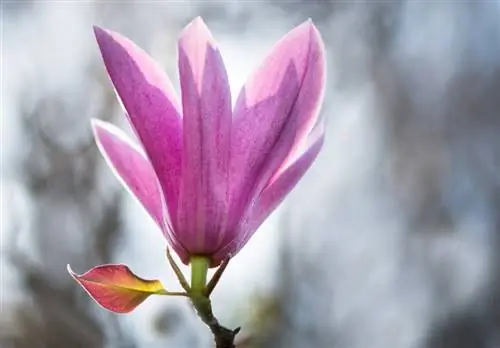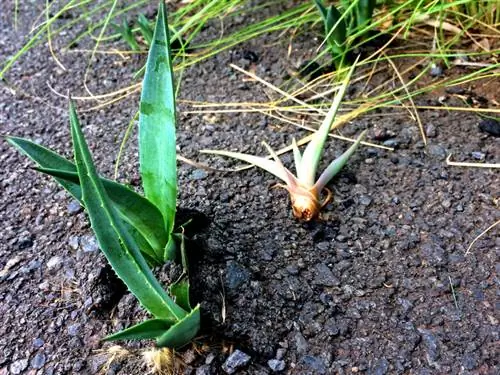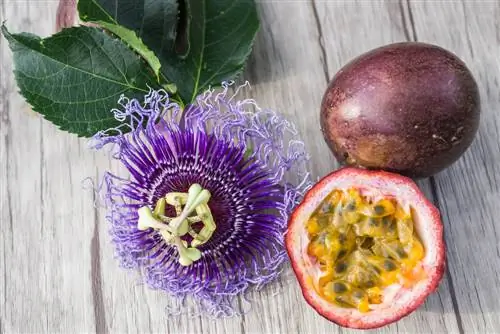- Author admin [email protected].
- Public 2023-12-16 16:46.
- Last modified 2025-01-23 11:20.
Just like propagation from cuttings, sinkers are clones of the mother plant. However, their advantage is that the young plants are fed by the adult passiflora until they have rooted themselves.
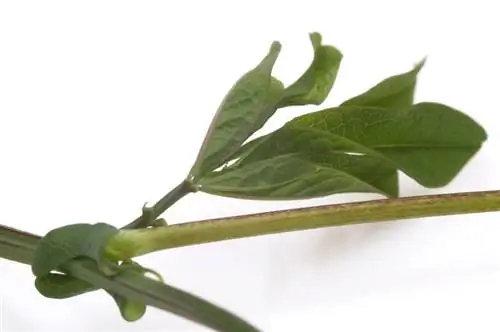
How do you propagate passion flowers by planting plants?
To propagate passion flower offshoots using planters, choose a young, flexible shoot, remove most of the leaves, cut the shoot at a slight angle, fix it in a seed pot with soil and keep it moist. Shoots should remain on the mother plant for 8 months before separating.
Sinkers are more resilient than cuttings
Although cuttings need on average at least eight months until they have formed sufficient roots and can be separated from the mother plant - therefore much longer than cuttings that are left to their own devices from the start - they are also more resilient against diseases and pests. For many perennials and shrubs, the lowering method promises significantly better success than propagating cuttings, but with passionflower the chosen method is basically irrelevant. Passiflora cuttings usually root quickly and reliably, but are quite susceptible to infestation with spider mites and similar sap-sucking pests.
Propagation of passiflora by reducing plants
In order to be able to grow subsoilers successfully, your Passiflora should either be in a sufficiently large pot or you have the option of installing a smaller cultivation pot in the immediate vicinity.to put up. This method is to be preferred if possible, otherwise the roots of the individual plants may become tangled. Lowering plants should be planted in spring.
- Select a flexible, young and he althy shoot.
- Remove all but two leaves on the “crest” of the shoot.
- Cut the shoot diagonally below the head to a length of two to three centimeters.
- Careful! The branch is only cut but not cut through!
- Hold the cut open with a piece of plastic, a match, or something similar.
- Now plant the shoot with the incision site in a pot with potting soil.
- The head looks out on the other side of the hollow.
- You can dip the incision site in a rooting hormone (€9.00 on Amazon).
- Fix the lowering bar with a piece of wire or similar.
- Keep the area moist, but do not fertilize.
The lowering plant should remain on the mother plant until the following spring and overwinter with it.
Tips & Tricks
Shoots that grew in winter usually do not produce flowers, which is why you can cut them back in spring. A cut also stimulates the growth and branching of the young plant, which should be separated from the mother plant from around April / May.

